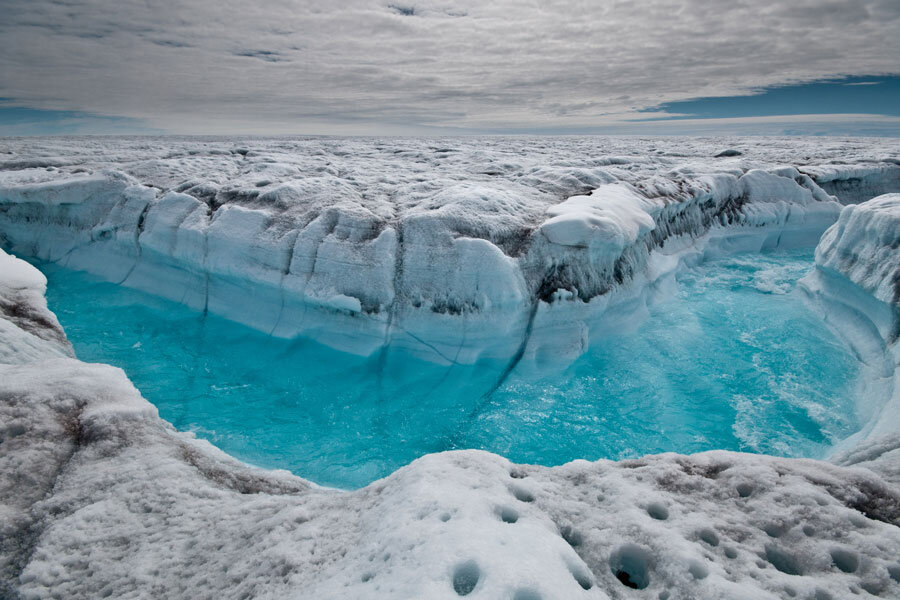Why a massive Greenland glacier is melting from below
Loading...
A massive glacier in northeast Greenland, named Zachariae Isstrom, has come detached from a stabilizing sill and is rapidly melting into the North Atlantic Ocean, according to a new study.
Zachariae Isstrom began "accelerated retreat" in 2012 and is currently melting at a rate of 5 billion tons per year, a team of scientists from NASA’s Jet Propulsion Laboratory, the University of Kansas, and the University of California-Irvine published in the journal Science last week.
This spells bad news for sea level rise because Zachariae Isstrom is big – the size of Maine – and could raise global sea level by more than 18 inches if it melts completely.
"Zachariae Isstrom is being hit from above and below," explained senior author Dr. Eric Rignot in a press release. "The top of the glacier is melting away as a result of decades of steadily increasing air temperatures, while its underside is compromised by currents carrying warmer ocean water."
And it's speeding up.
"Bottom melting" – ice melting from the underside of a glacier as warm water laps against it – has doubled since the 1990s, with half of the increase taking place over the past five years, say the researchers.
They also report that fjords – long, deep, narrow bodies of water that weave between glaciers – can plunge up to 2,000 feet deep. And deep fjords mean trouble for melting glaciers, because more hot, salty ocean water can flow in and melt glacier fronts.
Dr. Rignot and his team "want to know exactly where warmer marine water is fingering its way into Greenland and how large a channel it’s entering," explains the UCI Greenland Expedition program.
But the going is slow. The only way for Rignot and his team to collect this data is to travel by boat and drop measuring instruments into the water. To map out the critical boundary where ocean water hits the glacier Rignot and his team a half-million-dollar multi-beam sonar device that bounces sound waves off the seafloor.
Researchers say better models of the bottom of the top of the world will help us better understand future glacier melt and sea level rise.
NASA launched an urgent five-year program in April called Oceans Melting Greenland, or OMG, to measure the oceans' role in melting Greenland’s ice from below.
"This data … and ship-based observations of the sea floor geometry will provide a revolutionary data set for modeling ocean/ice interactions and lead to improved estimates of global sea level rise," explains NASA.
Zachariae Isstrom’s neighbor, the Nioghalvfjerdsfjorden glacier, is also melting rapidly. From 1976 to 2015, Nioghalvfjerdsfjorden’s melting increased by eight percent, the study reports.
"Of course we are worried about climate change," said Rignot. "In fact, I’m more overwhelmed because these things are happening so quickly."
He adds, "It’s a time bomb.… We’ve never been through something like this."






